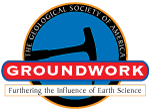Abstract View
Volume 28 Issue 8 (August 2018)
GSA Today
Article, pp. 26–27 | Full Text | PDF (561KB)
GROUNDWORK:
Using place-based, community-inspired research to broaden participation in the geosciences
1 Geology Program, Rocky Mountain College, 1511 Poly Drive, Billings, Montana 59102, USA
2 National Center for Earth-Surface Dynamics, St. Anthony Falls Laboratory, University of Minnesota, 2 Third Ave. SE, Minneapolis, Minnesota 55414, USA
3 Indian Natural Resources Science & Engineering Program, Humboldt State University, Walter Warren House #38, 1 Harpst Street, Arcata, California 95521, USA
4 Hydrology, Salish Kootenai College, P.O. Box 70, Pablo, Montana 59855, USA.
Introduction
There is no question that the geoscience community needs to be more diverse. The National Center for Science and Engineering Statistics (NCSES, 2017) reports over 80% of college and graduate degrees earned by U.S. citizens in the geosciences are awarded to Caucasians. The geoscience community has recognized this discrepancy. The National Science Foundation Directorate for Geosciences continues to make diversity a top priority and emphasizes broadening participation efforts through funding curriculum, instruction, and research opportunities designed to engage students from underrepresented populations.
Much research has been done on geoscience curricula and instruction that engage a broader audience (e.g., Kober, 2015; Singer et al., 2012). Others describe research experiences that have successfully engaged underrepresented students (e.g., Dalbotten et al., 2014; Haacker, 2015; Huntoon et al., 2015). These publications describe elements of Research Experience for Undergraduates (REU) models that prove successful in engaging and retaining students from underrepresented groups. We present another model for engaging underrepresented students—the REU site on Sustainable Land and Water Resources (SLAWR)—that is unique for its emphasis on recruiting Native American students and for its emphasis on place and community. For our model, “place” encompasses both the physical landscape related to the research sites and the human connections to those places. Under our approach, research topics are identified through systematic collaboration with communities tied to these places.
Manuscript received 19 Oct. 2017. Revised manuscript received 9 May 2018. Manuscript accepted 11 May 2018. Posted 12 June 2018.
10.1130/GSATG366GW.1
©2018, The Geological Society of America. CC-BY-NC.

